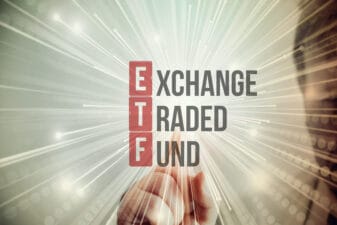Last year was not a great year for Canada’s energy producers. Shares of some of the most heavily indebted plunged anywhere from 50-90%, and that was after terrible results in the latter half of 2014.
The obvious culprit was the price of oil. But the story isn’t quite that simple. The market is concerned that low prices will persist until many of these small- and medium-sized producers go bankrupt. Since these producers need to be able to pump oil to pay the interest on their debt, they have little incentive to meaningfully lower production. These companies are literally producing like their lives depend on it.
This is why there’s been a major discrepancy between the share price of some of the more beleaguered producers and the ones with significant downstream exposure.
Look at it this way: back in June 2014 oil peaked at approximately $110 per barrel. At that time, shares of Suncor Energy Inc. (TSX:SU)(NYSE:SU) were trading at just a little over $45 each. Imperial Oil Limited (TSX:IMO)(NYSE:IMO) shares were a little over $55 each. And Baytex Energy Inc. (TSX:BTE)(NYSE:BTE) shares hit $48 each on the TSX.
These days, Suncor trades hands at $35.40 and Imperial Oil is currently $44.91. That represents a fall of about 20% for each. Yet Baytex (and many others like it) is down a whopping 90%.
Why the big difference?
There are several reasons why Suncor and Imperial Oil have been the better performers during this downturn.
A natural response from investors when oil crashed was to turn to quality. There’s a case to be made that Baytex could go bankrupt in 2016. I believe it’s a weak one, especially considering how the company boasts low-cost production–with an average breakeven price of about $42 per barrel–and no major debt due until 2021. Still, it’s obvious Baytex is in a precarious position if oil doesn’t start recovering in 2016.
Suncor and Imperial Oil are in much better shape. Each of these companies is sitting on large cash hoards. Suncor has more than $5 billion in the bank. Both have minimal debt loads and predictable earnings from downstream operations. Both own refineries and fleets of gas stations that are seeing increased volumes from lower gas prices. And both have posted positive earnings over the last year, while Baytex wrote down assets to the tune of a $5.82 per share loss.
Finally, both Suncor and Imperial Oil still pay dividends. Suncor’s yield is 3.3%, while Imperial Oil’s is much lower at 1.3%. Neither of these dividends is viewed as being at risk. Baytex was forced to cut its dividend back in 2014 and then eliminated it completely in 2015.
Which strategy?
As much as we’d like to think we know the direction of crude, the fact is nobody can predict it with any certainty. At the end of the day, guesses from even the smartest people out there are still guesses. There are legitimate arguments for saying that oil might stay at current levels or even go lower in 2016. There’s also a case to be made for it going higher.
If you think oil will stay around current levels, then an investment in Suncor or Imperial Oil is the smart move. These companies have the strength to survive prolonged lower prices. But at the same time, if you think oil will stay at today’s levels, why even invest in the sector at all? Wouldn’t a logical investor move their capital to a sector that stands to benefit from oil’s decline?
If you’re of the belief that oil will recover in 2016, then you want to invest in the riskier oil names such as Baytex. At this point, Baytex has become nothing more than a levered play on crude anyway. Even if it recovers to just $50 per barrel, Baytex starts to make a little bit of money again. Add in certain non-cash expenses such as depreciation, and it could even get back to positive free cash flow.
If oil recovers, the upside of the riskier producers will be huge, leaving names like Suncor and Imperial Oil in the dust. And if crude stays stagnant, there’s little reason to own anything in the sector. That’s why I’m avoiding the giants in the sector. Maybe you should, too.







